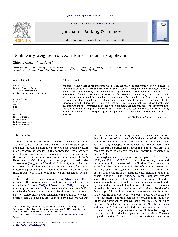摘要
We propose a new class of risk measures which satisfy convexity and monotonicity, two well-accepted axioms a reasonable and realistic risk measure should satisfy. Through a nonlinear weight function, the new measure can flexibly reflect the investor's degree of risk aversion, and can control the fat-tail phenomenon of the loss distribution. A realistic portfolio selection model with typical market frictions taken into account is established based on the new measure. Real data from the Chinese stock markets and American stock markets are used for empirical comparison of the new risk measure with the expected shortfall risk measure. The in-sample and out-of-sample empirical results show that the new risk measure and the corresponding portfolio selection model can not only reflect the investor's risk-averse attitude and the impact of different trading constraints, but can find robust optimal portfolios, which are superior to the corresponding optimal portfolios obtained under the expected shortfall risk measure.
- 出版日期2011-7
- 单位西安交通大学
